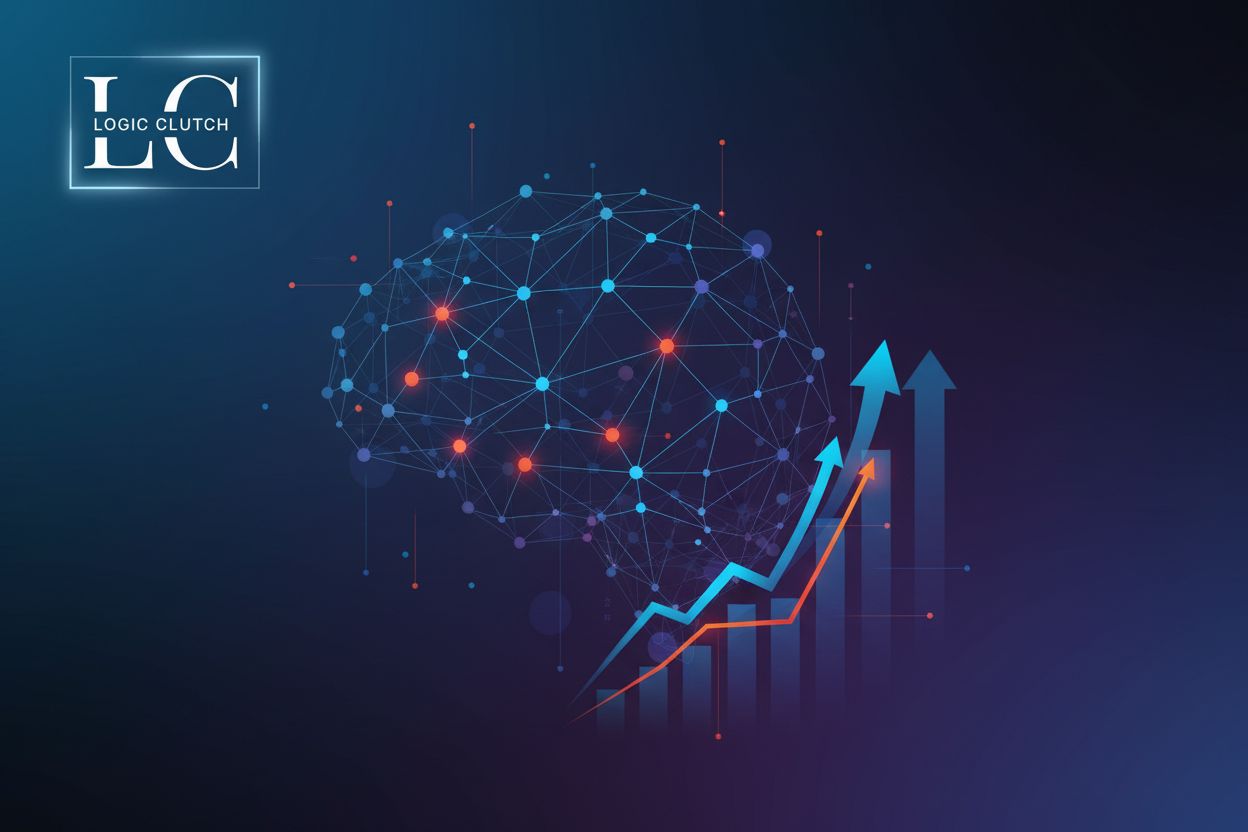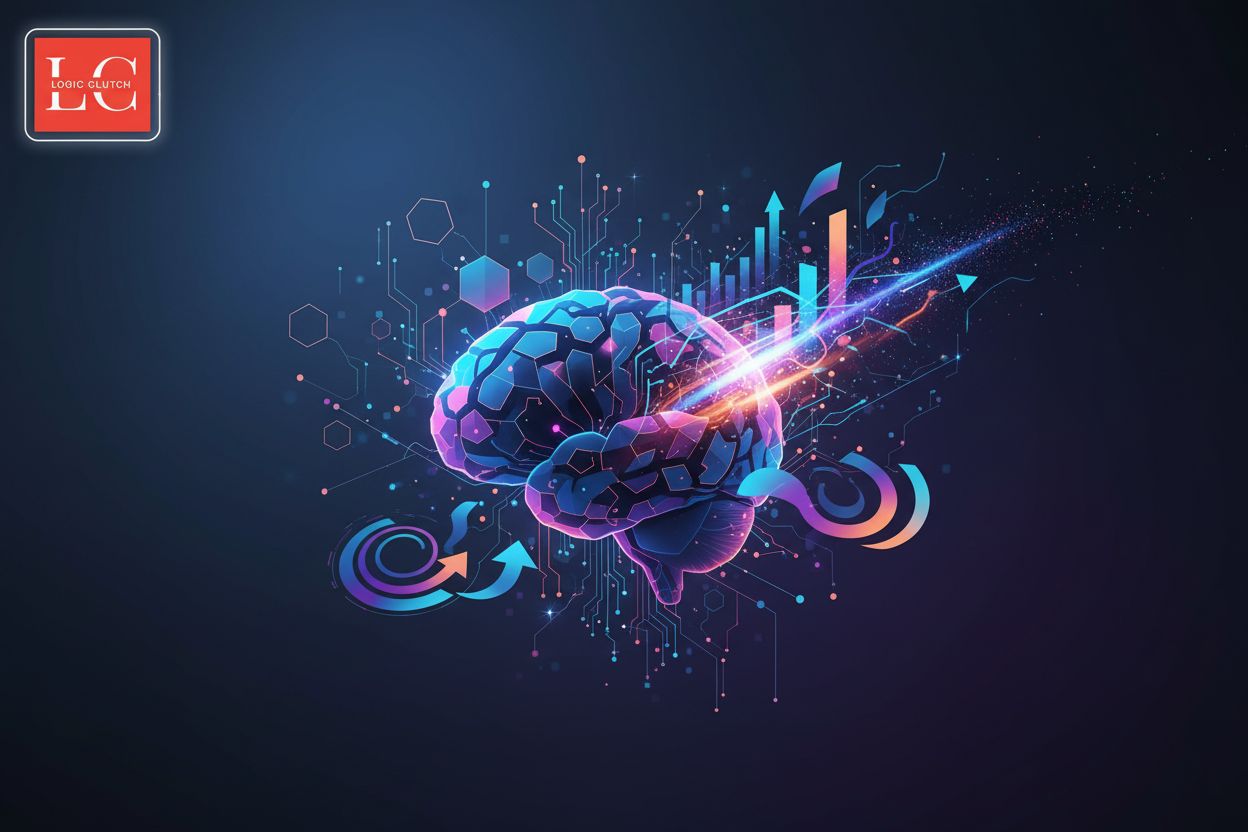Enhancing Complex, Multi-Model Data with AI Technologies
TL;DR
Understanding Complex, Multi-Model Data in the Enterprise
Okay, so you think you know data? Think again! It's not just spreadsheets anymore, it's this wild, tangled web of stuff – and it's only getting crazier.
Well, simply put, it's data that doesn't fit neatly into one box. You got your usual suspects, like relational databases (think rows and columns), but then you throw in graph data (relationships between things), document data (like json blobs), and suddenly, it's a party.
- Definition: Multi-model data mixes different types of data structures in one database. It's like having a toolbox with both hammers and screwdrivers, instead of just one or the other.
- Examples: Imagine a healthcare system. You've got patient records in a relational database, doctor-patient relationships as a graph, and medical images stored as documents. All related, but none of them is the same.
- Prevalence: It's everywhere. Think of e-commerce. You've got product catalogs (relational), customer reviews (documents), and purchase histories (graphs showing who bought what). Now, you gotta manage all of it.
Managing all this different data? Not easy, obviously. It’s like herding cats, honestly.
- Data Silos: Different departments use different systems, creating isolated islands of information. Getting them to talk to each other? A nightmare.
- Inconsistent Formats: One system calls it "customer_id," another calls it "custID." Simple, right? Wrong.
- Scalability: As your data grows, performance can take a nosedive. Nobody wants a slow database, trust me.
- Governance: Who's in charge of making sure the data is accurate and secure? And are they even listening?
Diagram 1: Challenges of Multi-Model Data Management illustrates the inherent difficulties in managing diverse data types, including data silos, format inconsistencies, scalability issues, and governance complexities.
Given these challenges, many enterprises look to centralize their customer data. Salesforce CRM is a prime example of such a system, aiming to be a single source of truth for customer information. However, it has limitations. It's awesome for structured customer information, but what happens when you need to bring in all that other stuff? The social media feeds? The iot data from connected devices?
- Salesforce as a Hub: It's supposed to be the single source of truth for customer info.
- Standard Data Model Limits: Salesforce's standard data model isn't really designed to handle super complex, unstructured data. You start hacking things together, and it gets ugly real fast.
- Extending Salesforce: That's where ai and other fancy tools come in. You need ways to bring in that multi-model data and make it useful within Salesforce.
So, what's next? We'll dive into how ai can help wrangle this multi-model data and actually make it useful. It's not a magic bullet, but it's a start.
AI Technologies for Enhancing Multi-Model Data
AI is everywhere now, right? But can it actually make sense of the mess that is multi-model data? Turns out, yeah, it’s pretty good at it. It's not just about throwing algorithms at the problem; it's about using the right ai for the right job.
Ever tried to make sense of a mountain of customer reviews? That's where natural language processing (nlp) comes in. nlp algorithms can sift through text data - think customer feedback, social media posts, support tickets - and extract meaningful insights. We're talking about figuring out what customers actually think and feel.
- Extracting insights from unstructured text data: nlp can pull out key phrases, topics, and entities from text, turning that unstructured mess into something usable.
- Sentiment analysis and topic modeling: Understanding the tone of customer feedback (positive, negative, neutral) and identifying common themes. This gives you a birds-eye view of customer sentiment.
- Using nlp to enrich customer profiles in Salesforce: Imagine automatically updating a customer's profile with their latest interests based on their social media activity. Pretty cool, huh?
Garbage in, garbage out, right? Machine learning (ml) can help clean up your data, so you're not making decisions based on bad information. It's like having a super-powered data janitor.
- Identifying and correcting data errors: ml algorithms can spot inconsistencies and anomalies in your data, like misspelled names or incorrect addresses.
- Detecting and merging duplicate records: Ever have multiple entries for the same customer? ml can find those duplicates and merge them, giving you a single, unified view.
- Improving data quality with ml algorithms: By automating data cleansing and deduplication, ml ensures your data is accurate and reliable.
Data isn't just about individual pieces of information; it's about the connections between them. Graph databases are perfect for modeling these complex relationships, and ai can help you make sense of them.
- Leveraging graph databases to model complex relationships: Think of social networks, supply chains, or even customer purchase histories. Graph databases can represent these relationships in a way that relational databases simply can't.
- Using graph algorithms to identify patterns and anomalies: Graph algorithms can find hidden connections and patterns in your data. For example, identifying fraudulent transactions or predicting customer churn.
- Enhancing Salesforce data with relationship insights: By integrating graph data with Salesforce, you can gain a deeper understanding of your customers and their interactions.
Diagram 2: AI Technologies for Multi-Model Data visually represents how different AI technologies like NLP, ML, and graph algorithms can be applied to various types of multi-model data to extract insights and improve data quality.
Believe it or not, ai can even extract information from images and videos. This opens up a whole new world of possibilities for understanding your customers.
- Analyzing visual data to extract relevant information: Computer vision algorithms can identify objects, people, and scenes in images and videos.
- Integrating computer vision with Salesforce for enhanced customer understanding: Imagine automatically tagging products in customer photos or analyzing customer behavior in retail stores.
- Examples of use cases: product recognition (identifying products in customer photos), brand monitoring (tracking brand mentions in images and videos), and analyzing customer demographics in retail settings.
So, what's the catch? Well, ai isn't a magic bullet. It requires careful planning, data preparation, and ongoing monitoring. But when used correctly, it can unlock valuable insights from your multi-model data and help you make better decisions. Next up, we'll explore how to integrate these AI technologies specifically into your Salesforce CRM system.
Integrating AI with Salesforce CRM: A Practical Guide
So, you've got all this ai magic, but how do you actually get it into Salesforce? It's not like you can just drag and drop, unfortunately.
Here's the deal: integrating ai with Salesforce CRM involves a few different approaches, and picking the right one depends on your needs (and, honestly, your budget).
- Using Salesforce APIs: Think of apis as connectors. They let different systems talk to each other. Salesforce has a bunch of apis that let you connect to external ai services, like those from amazon web services (aws), azure, or google cloud. so, you could use an api to send customer data to an ai service for analysis and then bring the results back into Salesforce.
- Exploring AI-Powered Apps on the Salesforce AppExchange: The appexchange is like an app store, but for Salesforce. You can find ai-powered apps that are pre-built to integrate with Salesforce. These apps can do all sorts of things, like predict sales opportunities, automate customer service, and personalize marketing campaigns.
- Considerations for choosing the right integration approach: This is where it gets tricky, and you have to think about a few things, like how much data you're processing, how real-time the integration needs to be, and how much customization you need. A pre-built app might be easier to set up, but it might not do exactly what you want. Using apis gives you more flexibility, but it requires more technical expertise.
Salesforce apis are the foundation for a lot of integrations. They allow you to programmatically access Salesforce data and functionality. For ai integrations, you might use the rest api to send data to an external ai service or the streaming api to get real-time updates.
import requests
import json
To obtain an access token, you'll typically go through an OAuth 2.0 flow.
This usually involves redirecting the user to Salesforce to authorize your application,
and then receiving a token in return. The specific flow (e.g., Authorization Code,
Client Credentials) depends on your application's needs and security requirements.
For simplicity, we're assuming you have a valid access_token here.
instance_url = "https://your-salesforce-instance.com" # Replace with your actual Salesforce instance URL
access_token = "YOUR_ACCESS_TOKEN" # Replace with your obtained access token
This is the endpoint for your external AI service.
It could be hosted on AWS, Azure, Google Cloud, or any other platform.
your_ai_service_url = "https://your-ai-service.com/analyze" # Replace with your AI service endpoint
data = {
"customer_name": "John Doe",
"customer_email": "[email protected]",
"customer_feedback": "This product is great!"
}
headers = {
"Authorization": f"Bearer {access_token}",
"Content-Type": "application/json"
}
In a real-world scenario, robust error handling is crucial.
This includes handling network errors, API rate limits, and specific error codes returned by the AI service.
Data transformation might also be necessary to ensure the data sent to the AI service
is in the correct format and that the results returned are correctly parsed and stored back in Salesforce.
try:
response = requests.post(your_ai_service_url, headers=headers, data=json.dumps(data))
response.raise_for_status() # Raise an exception for bad status codes (4xx or 5xx)
ai_results = response.json()
print("AI analysis:", ai_results)
# Here you would typically process ai_results and update Salesforce records
# using Salesforce APIs (e.g., making another POST request to Salesforce to update a record).
except requests.exceptions.RequestException as e:
print(f"An error occurred during the API request: {e}")
except json.JSONDecodeError:
print("Error decoding JSON response from AI service.")
except Exception as e:
print(f"An unexpected error occurred: {e}")
The Salesforce appexchange is a treasure trove of pre-built integrations. You can find apps for everything from lead scoring to sentiment analysis. The big plus? They're usually easier to set up than building something from scratch. Just be sure to do your homework and read the reviews before you commit.
It's widely reported that a significant majority of Salesforce customers utilize AppExchange apps. (13 ways apps can help you achieve success faster.)
But hey, don't just take my word for it.
So, which approach is right for you? It really depends on your specific needs. If you need a highly customized solution, using apis might be the way to go. If you're looking for a quick and easy win, an appexchange app might be a better fit. And if you're not sure, it's always a good idea to talk to a consultant who can help you assess your options.
Next up, we'll look at how to build custom ai solutions on the Salesforce platform.
Use Cases and Real-World Examples
AI is cool and all, but does it actually do anything useful? Turns out, when it comes to wrangling multi-model data, the answer is a pretty solid "yes." Let's look at some use cases where it shines.
Customer service is a pain, right? Especially when customers are asking questions you've answered a million times. ai can help. by using nlp to understand what customers are really asking, you can automatically suggest relevant knowledge articles. It's like having a super-smart ai assistant that's always ready to help.
- Using nlp to understand customer inquiries: ai can analyze the language that customers use, including slang and misspellings, to figure out what they really want.
- Automatically suggesting relevant knowledge articles: based on the customer's inquiry, the ai can suggest articles that are most likely to answer their question.
- Reducing customer service resolution times: By giving customers the answers they need quickly, ai can free up human agents to handle more complex issues.
Imagine a customer is complaining about their banking app being slow. The ai can analyze their message and automatically suggest articles about troubleshooting app performance or contacting support. See, less time wasted.
Sales teams are always looking for an edge, and ai can give them one. Machine learning can be used to predict which leads are most likely to convert, allowing sales reps to focus their efforts on the most promising opportunities.
- Predicting lead conversion rates with ml: ml algorithms can analyze data about leads, such as their job title, company size, and website activity, to predict their likelihood of becoming customers.
- Identifying high-potential opportunities: ai can identify opportunities that are most likely to close, based on factors like the size of the deal, the stage of the sales cycle, and the customer's engagement level.
- Personalizing sales interactions with ai insights: ai can provide sales reps with insights about their customers' needs and interests, allowing them to personalize their interactions and increase their chances of closing a deal.
For example, let’s say a financial services company uses ai to analyze leads and identifies a high-potential opportunity with a large corporation. The ai can then provide the sales rep with insights about the corporation's financial goals and challenges, allowing them to tailor their sales pitch accordingly.
Marketing is all about reaching the right people with the right message. ai can help you segment your audience based on their behavior and preferences, allowing you to personalize your marketing messages and improve your campaign roi.
- Segmenting customers based on behavior and preferences: ai can analyze data about customers, such as their purchase history, website activity, and social media engagement, to segment them into different groups based on their interests and needs.
- Personalizing marketing messages with ai: based on the customer's segment, the ai can personalize the marketing messages they receive, making them more relevant and engaging.
- Improving campaign roi with targeted messaging: By targeting the right people with the right message, ai can help you improve your campaign roi and get more bang for your buck.
Diagram 3: AI Use Cases in Salesforce showcases practical applications of AI in customer service, sales, and marketing, demonstrating how AI can leverage multi-model data for tangible business benefits.
Think about a B2C e-commerce platform using ai to segment customers based on their past purchases and browsing history. The ai can then personalize the marketing messages they receive, such as recommending products they might be interested in or offering discounts on items they've previously purchased.
So, yeah, ai can be pretty useful when it comes to multi-model data. It can help you improve customer service, enhance sales, and optimize marketing campaigns.
The Future of AI and Multi-Model Data in Salesforce
Okay, so, where's all this ai and multi-model data stuff headed, anyway? It's not just a fad; it's shaping how we'll make decisions, like, tomorrow.
- The rise of explainable ai (xai): ai is getting better at showing it's work. We're talking about ai that doesn't just spit out an answer, but explains how it got there. This is huge for trust and compliance, especially in industries like finance and healthcare. No one wants a black box making critical decisions, y'know?
- The increasing adoption of federated learning: Data privacy is a big deal. Federated learning lets ai models learn from data without actually moving the data. It's like borrowing ideas without sharing secrets. Think healthcare orgs collaborating on research without sharing patient records. Pretty neat, huh?
- The convergence of ai and data governance: ai needs rules. Data governance makes sure that ai is used responsibly and ethically. This means things like monitoring for bias and ensuring data quality. Because nobody wants ai going rogue.
These technological advancements are paving the way for more sophisticated AI applications. To fully leverage these, organizations need to focus on their internal capabilities and culture.
- Investing in ai skills and training: ai isn't gonna run itself. Companies need people who know how to build, deploy, and manage ai systems. This means more than just hiring data scientists; it's about training everyone to be data-literate.
- Building a data-centric culture: Data can’t just live in the it department. It needs to be part of everyone's job. Encourage experimentation, celebrate data-driven wins, and make it okay to fail fast and learn from mistakes.
- Embracing continuous learning and innovation: ai is moving fast. What's cutting-edge today is old news tomorrow. So, stay curious, keep experimenting, and don't be afraid to try new things.
Diagram 4: Future Trends in AI and Multi-Model Data outlines emerging AI technologies and the crucial organizational shifts needed to adapt and thrive in this evolving landscape.
So, there you have it. ai and multi-model data aren't just buzzwords; they're the future. Get on board, or get left behind, honestly.






